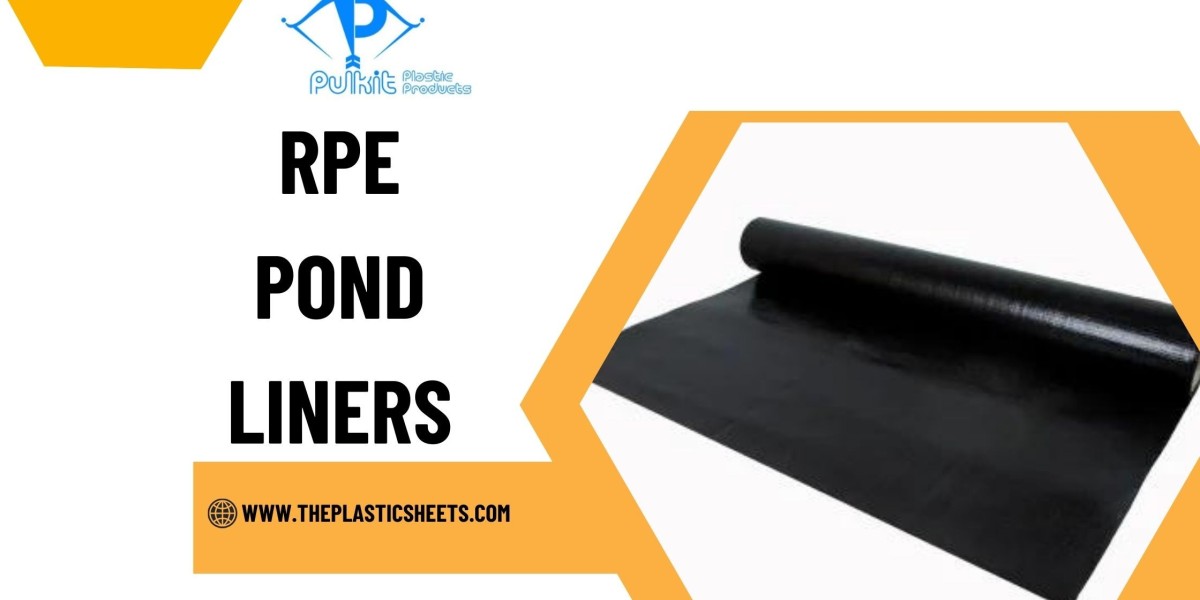Pond liners are critical components in the construction and maintenance of ponds, lakes, and other water features. Among the various options available in the market, RPE pond liners stand out due to their excellent durability, strength, and adaptability. In this article, we will explore everything you need to know about RPE pond liners, including their properties, applications, and manufacturing, with a focus on key players in the industry such as Pulkit Plastic Products and their operations in regions like RPE Pond Liner Canada.
What is an RPE Pond Liner?
RPE stands for Reinforced Polyethylene. RPE pond liners are made from high-quality polyethylene that is reinforced with a scrim to improve tensile strength and puncture resistance. These liners are specifically designed for use in aquatic environments, allowing for secure containment of water while preventing leakage into surrounding soil.
Key Properties of RPE Pond Liners
Durability: RPE pond liners are known for their remarkable durability. They can withstand extreme weather conditions, including UV radiation, which helps to prevent degradation over time. This resilience makes them suitable for long-term applications in both residential and commercial projects.
Puncture and Tear Resistance: The scrim reinforcement gives RPE liners superior puncture and tear resistance compared to standard polyethylene. This is particularly important in environments where the ground may shift or contain sharp objects, which could compromise the integrity of the liner.
Waterproof: RPE pond liners provide a robust waterproof barrier, preventing water from seeping into the ground. This is essential for maintaining the water levels needed for fish, plants, and other aquatic life.
Flexibility: RPE pond liners are highly flexible, which allows them to conform to the contours of the pond or water feature. This adaptability simplifies installation and makes them easy to work with.
Chemical Resistance: RPE is resistant to many chemicals and pollutants, making it suitable for use in environments where fertilizers or other chemicals may be introduced into the water.
Eco-Friendliness: Many manufacturers producing RPE pond liners are now considering sustainability practices by sourcing eco-friendly materials and ensuring recyclability.
Applications of RPE Pond Liners
RPE pond liners have a variety of applications, each benefiting from the unique properties of the material:
Aquaculture: These liners play a significant role in aquaculture projects, such as fish farming or shrimp farming, where maintaining specific water quality and levels is crucial.
Ornamental Ponds: Garden and landscape designers use RPE pond liners for ornamental ponds, ensuring beautiful visuals alongside functional water containment.
Stormwater Management: RPE liners can be employed in retention ponds and stormwater management systems, helping in flood control and water quality management.
Wastewater Treatment: The liners are also used in wastewater treatment facilities to prevent contamination of groundwater and control runoff.
Mining Operations: In mining applications, RPE pond liners are used to contain tailings, chemical runoff, and other byproducts, ensuring environmental safety.
RPE Pond Liner Roll and Dimensions
RPE pond liners are commonly available in large rolls, known as RPE pond liner roll. These rolls facilitate easy transportation and installation, accommodating various project sizes. The size of the roll typically influences the application, and homeowners or contractors can choose from different dimensions based on their specific needs.
RPE pond liner rolls can come in various thicknesses, typically ranging from 30 mil to 60 mil or even thicker, depending on the intended application. The thicker the liner, the greater its durability and puncture resistance—an essential consideration for projects with heavy foot traffic or vehicles.
RPE Pond Liner Manufacturers
The demand for RPE pond liners has led to the emergence of numerous manufacturers globally. Among the notable RPE pond liner manufacturers, companies have invested in advanced technologies to produce high-quality products that meet rigorous standards.
In Canada, RPE pond liners are increasingly being produced to cater to the growing aquaculture and landscaping markets. Local manufacturers ensure that their products comply with local regulations and climate conditions, often incorporating features that address environmental concerns while maintaining durability.
In India, manufacturers are also recognizing the utility of RPE pond liners to support agricultural and aquaculture initiatives, as well as for various landscaping applications. The increasing focus on eco-friendly construction and sustainable practices has accelerated the growth of RPE pond liner production in the region.
Pulkit Plastic Products: A Leading Manufacturer
Among the prominent players in the RPE pond liner market is Pulkit Plastic Products, a reputable manufacturer known for delivering high-quality lining solutions. Pulkit Plastic Products prides itself on using advanced manufacturing techniques and premium raw materials to produce liners that meet international industry standards.
The commitment to quality not only ensures durability and reliability in their products but also fosters a strong reputation among customers seeking reliable pond lining solutions. Whether for personal gardens or large-scale commercial applications, Pulkit Plastic Products offers a range of RPE pond liners that cater to diverse needs.
Installation of RPE Pond Liners
Installing an RPE pond liner is a crucial step that can significantly affect the longevity and functionality of the pond. Here’s an overview of the installation process:
Site Preparation: The first step involves clearing the area of any debris, rocks, or sharp objects that could damage the liner. The ground should be level and free of any sharp edges.
Excavation: Depending on the design, the pond's shape and depth must be excavated to the desired size. The deeper the pond, the more careful excavation is required to achieve the appropriate gradient.
Use of Underlayment: Many professionals recommend using an underlayment, which is a protective barrier placed beneath the liner. This assists in preventing punctures and tears during and after installation.
Liner Placement: The RPE pond liner roll is unrolled and positioned over the excavated area. It should be laid out with enough overlap to cover edges, especially in corners and curves.
Securing the Edges: The liner edges should be secured using landscaping fabric, stones, or other materials to prevent shifting during filling with water.
Filling the Pond: Once the liner is in place and secured, the pond can be filled with water. The weight of the water will help settle the liner and conform to the pond's shape.
Final Touches: After filling, any excess liner can be trimmed, and landscaping can be performed around the pond to achieve the desired aesthetic.
Conclusion
RPE pond liners serve as an essential component for a variety of aquatic applications, providing a durable and effective solution for water containment. Their strength, flexibility, and resistance to environmental factors make them an ideal choice for homeowners and commercial projects alike.
With leading manufacturers such as Pulkit Plastic Products stewarding the quality of these products, the RPE pond liner market is set for continuous growth. Whether you are in Canada, India, or anywhere else, understanding the advantages, applications, and installation processes associated with RPE pond liners can lead to successful water feature constructions, enhancing both functionality and aesthetic appeal.
Frequently Asked Questions (FAQs)
1. What are the main benefits of using RPE pond liners?
RPE pond liners offer excellent durability, puncture resistance, water containment, and adaptability to various applications.
2. Where can I purchase RPE pond liners in Canada?
RPE pond liners are widely available in Canada through local suppliers and specialized manufacturers, including Pulkit Plastic Products.
3. How thick should an RPE pond liner be for optimal performance?
Thicknesses typically range from 30 mil to 60 mil, with thicker liners offering greater durability and resistance to punctures.
4. Can RPE pond liners be repaired if damaged?
Yes, most RPE pond liners can be repaired with patch kits specifically designed for polyethylene materials.
5. How long can RPE pond liners last?
With proper installation and maintenance, RPE pond liners can last upwards of 20 years or more, depending on environmental conditions.



